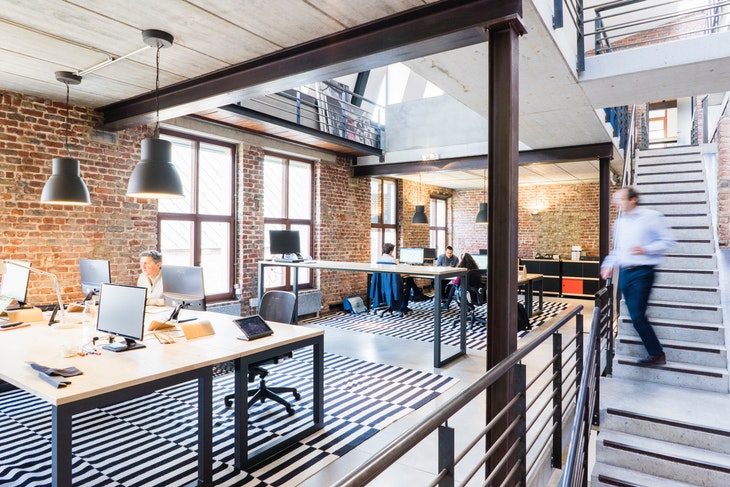
It’s easy to treat lighting as an afterthought when setting up a workspace, especially if the commercial building you are using already seems resplendent in electrical lighting fixtures. However, office lighting can go far beyond enabling your staff to see what they are working on.
A range of health problems, including eye strain, headaches and fatigue, have been attributed to poor lighting, which can also heighten stress and anxiety in work environments that are especially pressured. Furthermore, for various facets of health, natural light betters artificial illumination.
Read more after the jump:
What’s the problem with artificial lighting?
It’s an understandable question to raise, especially if your office is based in an area of the northern hemisphere where daylight is not in sufficient supply to illuminate a whole working area.
However, where practically possible, you should try to increase the amount of natural light in your office.
In October 2018, 7,000 desk-based office workers across ten European countries were surveyed on workplace lighting. As Forbes reports, 80% of office workers attached importance to the quality of such lighting, while 40% reported needing to contend with uncomfortable lighting daily.
Nearly a third, 32%, claimed that better lighting would increase their happiness at work. However, in a separate survey reported by Harvard Business Review, over a third of 1,614 North American employees despaired about not receiving sufficient natural light at work.
The positive differences with natural lighting
It is telling just how many workers in the latter survey emphasized natural light. Among the respondents, 47% said they felt tired or very tired due to the lack of natural light or a window where they work, while access to natural light and outdoor views was even deemed the most important attribute of the workplace environment, leaving factors like on-site cafeterias and childcare trailing.
Science bears out the wisdom of expanding the amount of organic light in the workplace. In many cases, exposure to natural light for as little as 13 to 15 minutes can be enough to release endorphins or “happy hormones”, while such lighting can also help to alleviate seasonal affective disorder (SAD).
Healthline documents various other benefits, including boosted intake of vitamin D, improved sleep and lowered health risks of fluorescent light bulbs – which, though generally deemed safe in their compact form, can elicit an elevated stress response in some individuals.
How can you increase natural light in your workplace?
As we have acknowledged, it can be tricky, if not impossible, for natural lighting to account for all of the illumination that particular workplaces need. However, there remain a few subtle measures for improving concentrations of natural lighting in these places.
For example, you can hang mirrors to let sunlight reflect around a room and remove heavy curtains to allow more sunlight to trickle through. Certain colors, especially white, are particularly reflective in a workplace, with light-colored pastels and eggshell wash also optional hues.
If you’re still struggling, a significant overhaul of your workplace’s layout might be warranted – and an office design company could help you with this change.



